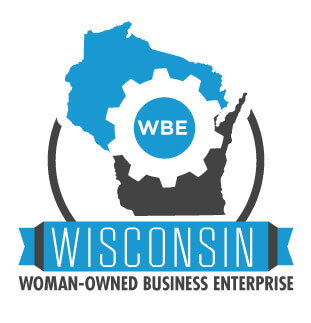In a recent workshop, Wanda Sloan, HR Diversity/Staff Development Specialist at Blackhawk Technical College, asked an intriguing question: How can we create a learning community in a workshop? Our excellent group came up with five techniques that we have used. My task is to share them with you. (And I know if I forget something important, Shirley, David, Wanda or Anna will let me know!)
There are three simple ways to build and reinforce connections among learners. I call them simple because they don’t require any real planning, preparation, or materials. We discussed these in last week’s Tip.
There are two ways to build and reinforce connections among learners that are very colorful and require some planning, preparation, and materials. We’ll discuss these in today’s Tip.
The two more preparation-intensive techniques to create community include: (1) department connections and (2) interconnection collage.
(1) Department Connections. Concept: Knot together different colored strands of yarn. Pre-session preparation: Select a different color to represent each agency department, purchase yarn in these different colors, cut the yarn into 1-2 foot lengths, and place a strand of yarn relevant to the individual participant in each participant’s workshop binder. For example, each participant who works in the Accounting Department might be given green yarn, while each participant who works in the Human Resources Department might be given yellow yarn.
Have the participants introduce themselves: their name, department, work title, one key responsibility- and how it relates to one of the other departments. After the first person speaks, someone from a different department should be next- indicating how his or her job interfaces (either directly or indirectly) with that of the preceding person- and tying his or her yarn to the first person’s yarn. (This means that the participants will have to stand up and move together as they tie their pieces of yarn together.) Each multi-colored knot will indicate a departmental connection. The completed knotted yarn can be draped in the front of the training room as a visual reinforcement of the departmental connections.
Department Connections creates awareness of individual job interfaces between different departments.
(2) Interconnection Collage. Concept: Create a whole class paper collage. Pre-session preparation: Gather together pieces of construction paper, magazines with lots of pictures, enough scissors for each participant, colored pens or markers, and paste and/or tape. Decide whether the interconnection focus will be job-related or life-related. (If job-related, the collage will depict information reflecting department, work title, and key responsibilities, etc. If life-related, the collage will depict information reflecting more personal or social aspects of the individual’s life, such as: place of birth, hobbies, most interesting thing they’ve done or place they’ve visited, etc.) Check the training room to select a wall big enough for the whole class collage.
At the beginning of the workshop, have each participant select a piece of paper. Tell the participants that their individual task is to create a collage that depicts the declared (job-related or life-related) focus using pictures, words and/or phrases cut out of the magazines. Make sure that they each have scissors to cut out what they want from the magazines. Indicate that they can arrange their magazine clippings in any way they choose, using the tape or paste to affix them onto their pieces of construction paper. Explain that they will use the collage to introduce themselves. Remind them to put their name somewhere on the page, because their individual collages will ultimately be taped together to make a class collage.
Have the first participant volunteer hold up his or her collage and give an introduction. Then have this person tape his or her collage on the wall. The next participant who volunteers to make an introduction should repeat this process. However, this next participant should tape his or her collage next to the first collage. Then, using a colored pen or marker, this second individual should draw arrows between items on the first collage that relate to items on his or her collage.
Each participant will repeat this process in turn, taping their collage next to one on the wall that is most related to theirs- and then drawing arrows between items on their collage and items on any of the other collages already taped to the wall.
When the activity is completed, there will be an entire wall collage criss-crossed with arrows that show all of the connections between the participants. A post-session reminder of their connections can be provided if a digital photo is taken of the wall collage and sent to the participants.
Interconnection Collage provides a visual representation of the different ways the participants connect with each other.
This concludes our discussion about how to create a learning community in a workshop. However, if you have other techniques that you have used, please write in and we’ll print them in the next Tip.
Next week, we will begin a discussion about multi-modal learning.





